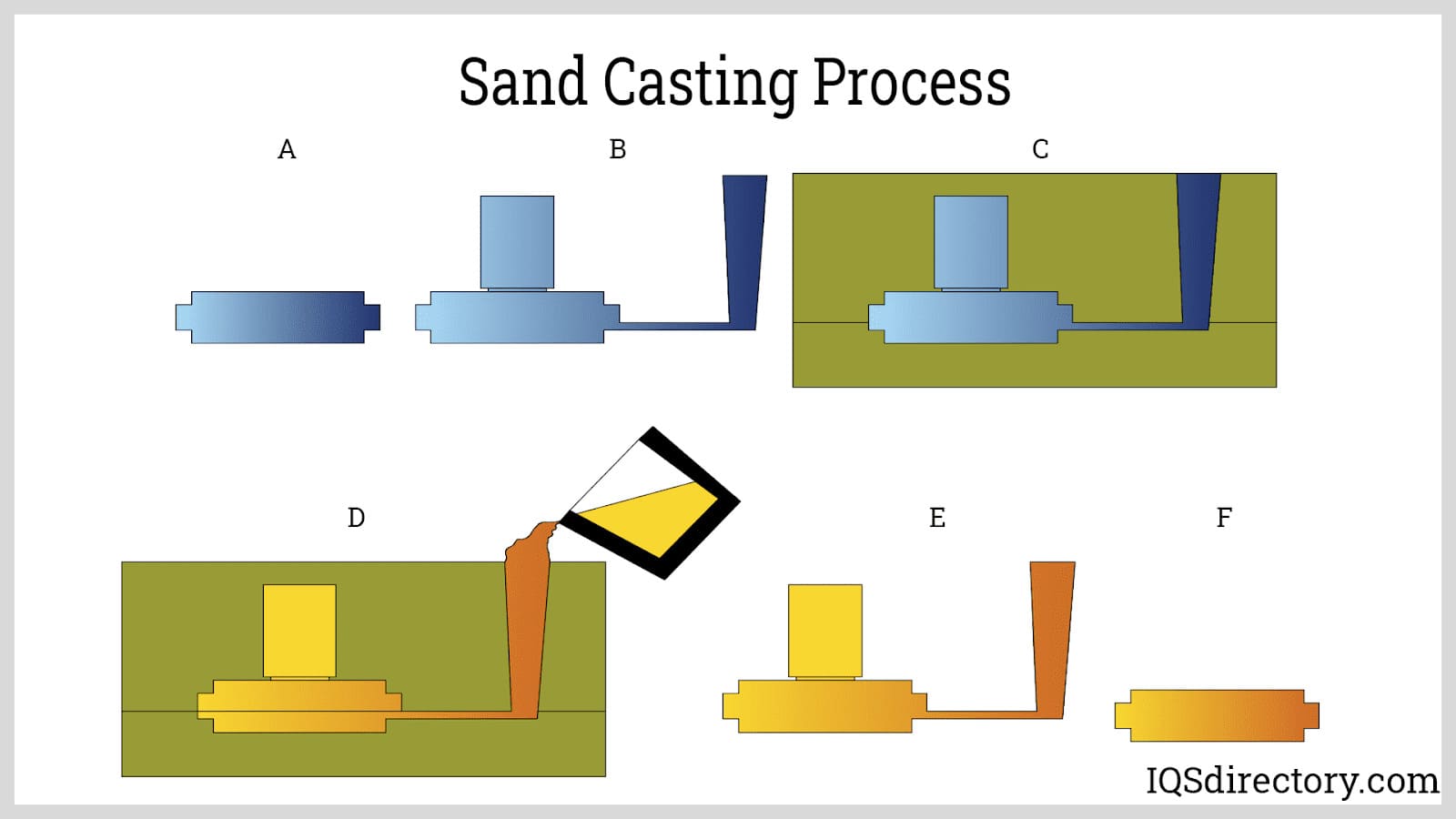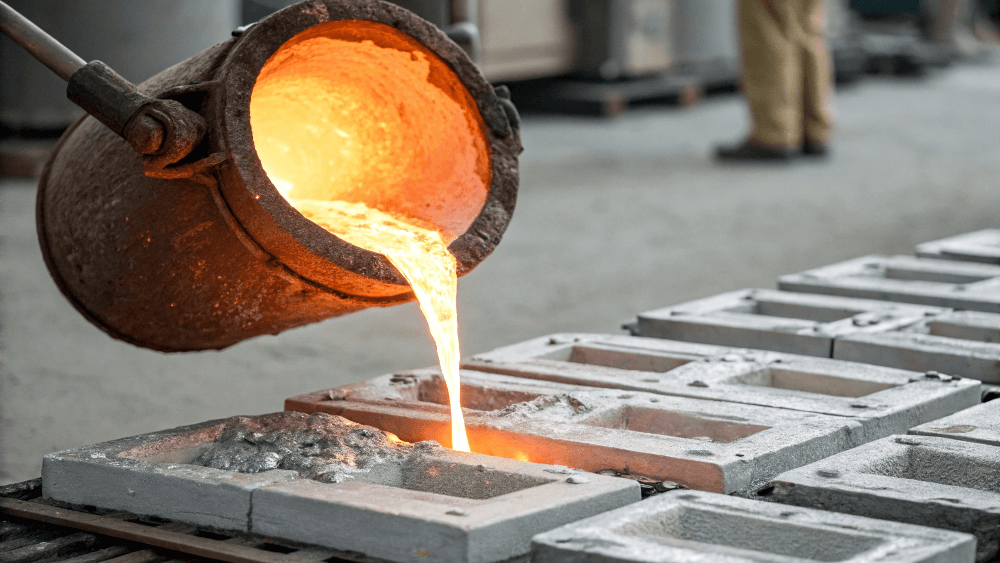Exactly How Aluminum Foundry Adds To Advancements in Aerospace Design
Aluminum shops are indispensable to developments in aerospace engineering. They create light-weight, high-strength parts that are vital for modern aircraft. With sophisticated spreading techniques, these factories produce complicated geometries that boost architectural stability. In addition, the development of remarkable Aluminum alloys supports the industry's focus on fuel performance and sustainability. Challenges remain in the manufacturing procedure. Comprehending these factors reveals the profound influence of Aluminum on aeronautics's future.
The Relevance of Lightweight Products in Aerospace Layout
As the aerospace market remains to develop, the value of lightweight products becomes increasingly noticeable. The need for performance and sustainability drives engineers to prioritize making use of products that reduce general weight without jeopardizing structural honesty. Light-weight materials, specifically Aluminum, play a vital function in enhancing fuel efficiency, improving haul capability, and enhancing the overall performance of airplane.
The assimilation of these materials permits for cutting-edge styles, enabling manufacturers to create more aerodynamic shapes that can endure severe conditions. The decrease in weight not only lowers functional costs however additionally adds to a decreased ecological footprint, aligning with international efforts towards sustainability in aviation.
Advanced Casting Techniques in Aluminum Foundries
Advanced spreading strategies in Aluminum factories play an important function in aerospace design by allowing the production of lightweight and exact elements. Technologies in mold layout and precision spreading processes are vital in attaining perfect efficiency and architectural stability. In addition, the advancement of light-weight alloys improves the overall efficiency and performance of aerospace applications.
Ingenious Mold Layout
Innovative mold and mildew design plays an essential function in the efficiency and performance of Aluminum foundries, especially within the aerospace sector. By leveraging innovative materials and techniques, contemporary mold and mildews can be crafted to endure heats and stress, ensuring peak efficiency throughout the spreading process. These layouts usually integrate intricate geometries that enable the production of lightweight yet structurally sound parts, essential for aerospace applications. Furthermore, the use of computer-aided layout (CAD) software program promotes exact modeling, enabling foundries to refine and simulate mold and mildew designs before physical manufacturing begins. This not only enhances the high quality of actors components yet also lowers waste and lead times, leading to considerable price financial savings. In general, cutting-edge mold and mildew layout is a keystone of progress in Aluminum Foundry innovation for aerospace engineering.
Precision Casting Processes
The performance of cutting-edge mold layouts flawlessly incorporates with precision casting processes, which are necessary for producing high-grade Aluminum elements in aerospace engineering. These procedures, including sand spreading, pass away casting, and investment casting, ensure the production of complicated geometries with limited tolerances. Advanced strategies like vacuum cleaner spreading and stress pass away casting boost the honesty and surface area finish of the end products. Accuracy spreading minimizes material waste while making the most of the mechanical homes of Aluminum, important for aerospace applications. Additionally, using real-time monitoring and progressed simulation devices during the spreading process allows for immediate modifications, causing boosted quality assurance. Collectively, these precision spreading processes position Aluminum shops at the leading edge of aerospace innovation, sustaining the sector's need for integrity and efficiency.
Light-weight Alloy Growth
As aerospace designers look for to boost gas efficiency and performance, lightweight alloy development becomes an important focus in Aluminum foundries. These shops employ advanced casting methods to produce alloys that supply exceptional strength-to-weight ratios. Advancements in alloy composition, including the unification of components like lithium and magnesium, allow the manufacturing of products that withstand severe conditions while reducing general aircraft weight. Strategies such as die casting and financial investment spreading promote the precision manufacturing of complicated shapes, which are critical for aerospace applications. In addition, ongoing research study aims to enhance these alloys for improved mechanical properties and raised resilience. By prioritizing lightweight alloy growth, Aluminum shops greatly contribute to the advancement of aerospace engineering, leading the means for more effective and lasting aircraft layouts.

Enhancing Structural Integrity Through Aluminum Elements
Aluminum components offer substantial benefits in boosting architectural stability within aerospace engineering. Their light-weight nature adds to total efficiency while maintaining strength, which is necessary for aircraft performance. Furthermore, the anxiety resistance homes of Aluminum assistance ensure the sturdiness and integrity of aerospace structures under various operational problems.
Lightweight Product Conveniences
While typical products usually endanger weight for toughness, utilizing Aluminum parts in aerospace engineering uses substantial advantages in architectural integrity. Aluminum's light-weight nature adds to overall layout performance, enabling more streamlined airplane that eat much less gas, consequently improving sustainability. The product's outstanding strength-to-weight ratio guarantees that elements keep durability without including unnecessary mass. This top quality fosters enhanced efficiency and agility in flight, as well as optimized payload abilities. Furthermore, Aluminum's resistance to rust extends the life-span of aerospace structures, decreasing maintenance expenses and enhancing safety. As manufacturers increasingly take on Aluminum alloys, the aerospace sector experiences a transformative shift towards more efficient and reliable design services that focus on both performance and ecological obligation.
Tension Resistance Residences
Various materials possess unique residential or commercial properties, Aluminum's outstanding anxiety resistance stands out as an important element in enhancing the architectural honesty of aerospace parts. This resistance plays a vital role in guaranteeing that aircraft can hold up against different operational stress and anxieties, including tiredness, effect, and environmental problems. Aluminum alloys, especially engineered for aerospace applications, show high tensile stamina while maintaining light-weight qualities, making it possible for designers to develop much more reliable structures - Aluminum Foundry. In addition, the capacity of Aluminum to endure cyclic loading without considerable contortion adds to the long life and reliability of aerospace elements. As improvements proceed in Aluminum Foundry techniques, the development of stress-resistant Aluminum parts promises more improvements in efficiency, safety, and efficiency across the aerospace sector, solidifying Aluminum's duty as a favored material in modern engineering
Gas Performance Improvements Driven by Aluminum Innovations
As the aerospace market seeks to improve fuel performance, ingenious uses Aluminum have become an important service. Aluminum's light-weight nature significantly minimizes aircraft weight, permitting reduced fuel intake during trip. This reduction in weight is crucial, as also little decreases can bring about substantial improvements in general fuel economy.
Advanced Aluminum alloys, designed for enhanced strength and toughness, make it possible for manufacturers to develop parts that preserve structural honesty while lessening mass - Aluminum Foundry. Additionally, the assimilation of Aluminum in airframes and engine parts promotes boosted the rules of aerodynamics, adding to minimized drag and raised efficiency
The fostering of Aluminum in aerospace not just satisfies the need for fuel-efficient layout but additionally aligns with regulative pressures for reduced exhausts. As these developments proceed to advance, they play a considerable duty in setting new benchmarks for gas performance, making sure that the aerospace sector can satisfy growing economic and environmental challenges.

The Duty of Aluminum in Sustainable Aviation Practices
The increasing emphasis on lasting air travel techniques has actually positioned Aluminum as an essential material in the mission for greener aircraft style. Understood for its lightweight homes, Aluminum substantially lowers airplane weight, causing reduced fuel usage and emissions. Its recyclability additionally boosts its sustainability account, as Aluminum can be reused forever without loss of quality. This particular sustains a round economic climate within the aeronautics field, lessening waste and source exhaustion.
Moreover, advancements in Aluminum alloys have enhanced their strength and rust resistance, permitting longer life span and decreased maintenance demands. These technologies assist in the development of a lot more efficient aircraft frameworks, adding to total sustainability initiatives. Furthermore, Aluminum's thermal conductivity plays a vital duty in energy-efficient layouts, improving systems such as warm exchangers. Jointly, these attributes emphasize Aluminum's pivotal function beforehand sustainable air travel, aligning with worldwide initiatives aimed at minimizing the ecological effect of flight.
Challenges Encountered by Aluminum Foundries in Aerospace Manufacturing
While Aluminum factories play a vital duty in aerospace production, they face substantial challenges that can impact production performance and quality. One major difficulty is the rigorous high quality control requirements needed in the aerospace industry. Any type of flaw can endanger security and performance, necessitating strenuous evaluation processes click to find out more that expand production timelines. In addition, factories frequently contend he has a good point with varying raw material prices, which can affect pricing and profitability. The intricacy of Aluminum alloys utilized in aerospace applications more complicates the manufacturing procedure, as accurate solutions are critical for accomplishing desired mechanical homes. Additionally, skilled labor scarcities hinder the capability to preserve high-quality manufacturing degrees. Ultimately, environmental laws enforce restrictions on exhausts and waste management, requiring foundries to buy lasting methods, which can be cost-prohibitive. These variables jointly create a landscape where Aluminum foundries must continuously adjust to meet the progressing needs of aerospace production while guaranteeing safety and compliance.
Future Patterns in Aluminum Applications for Aerospace Engineering
With advancements in modern technology and increasing demands for performance, the future of Aluminum applications in aerospace design is positioned for considerable improvement. The combination of ingenious Aluminum alloys and compounds is anticipated to enhance strength-to-weight proportions, resulting in more fuel-efficient aircraft layouts. Furthermore, innovations in additive production methods will enable the manufacturing of intricate Aluminum structures that were formerly difficult, enhancing efficiency and lowering waste.

Lasting methods will certainly play an important role, with a growing focus on reusing Aluminum to lessen ecological influence. The aerospace field is likely to embrace smarter manufacturing procedures, such as automation and artificial knowledge, making sure greater quality and accuracy in Aluminum parts. In addition, partnerships between Aluminum factories and aerospace business will promote r & d, leading the way for new applications that fulfill the rigorous needs of modern-day aerospace design - Aluminum Foundry. On the whole, the future looks assuring for Aluminum's duty in forming the skies
Regularly Asked Inquiries
What Are the Ecological Impacts of Aluminum Manufacturing in Aerospace?
The ecological effects of Aluminum production in aerospace include substantial power intake, greenhouse gas emissions, and environment disturbance. In addition, mining processes can Continued lead to soil destruction and water contamination, increasing issues about sustainability and ecological equilibrium.
How Does Aluminum Contrast to Various Other Materials in Aerospace Applications?
Aluminum supplies an one-of-a-kind combination of lightweight buildings, rust resistance, and cost-effectiveness compared to various other products. Its high strength-to-weight ratio makes it specifically helpful for aerospace applications, enhancing gas performance and overall efficiency in aircraft style.
What Qualifications Do Aluminum Foundry Employees Demand for Aerospace Projects?
Aluminum Foundry workers call for customized training in metallurgy and casting methods, in addition to understanding of aerospace industry requirements. Certifications in top quality control and security methods are also necessary to guarantee compliance with rigorous aerospace project demands.
Exist Any Type Of Safety Worry About Using Aluminum in Aerospace Engineering?
Safety and security worries pertaining to Aluminum in aerospace engineering include vulnerability to rust, stress, and fatigue cracks. Correct therapy and alloy option are vital to mitigate these dangers, guaranteeing architectural honesty and overall safety in aerospace applications.
How Does Aluminum Recycling Benefit the Aerospace Industry?
Aluminum reusing significantly benefits the aerospace sector by lowering product expenses, decreasing ecological influence, and conserving power. This sustainable technique boosts the industry's effectiveness while promoting the usage of light-weight, high-performance parts in airplane manufacturing.
Advanced casting techniques in Aluminum foundries play a vital duty in aerospace engineering by allowing the production of light-weight and exact elements. Innovative mold and mildew layout plays a crucial duty in the effectiveness and efficiency of Aluminum foundries, especially within the aerospace industry. As aerospace designers seek to boost fuel performance and performance, light-weight alloy development ends up being an important emphasis in Aluminum factories. Aluminum alloys, especially crafted for aerospace applications, display high tensile toughness while keeping lightweight characteristics, allowing designers to create much more effective frameworks. Partnerships in between Aluminum shops and aerospace business will promote research and growth, leading the way for new applications that satisfy the rigid demands of contemporary aerospace design.